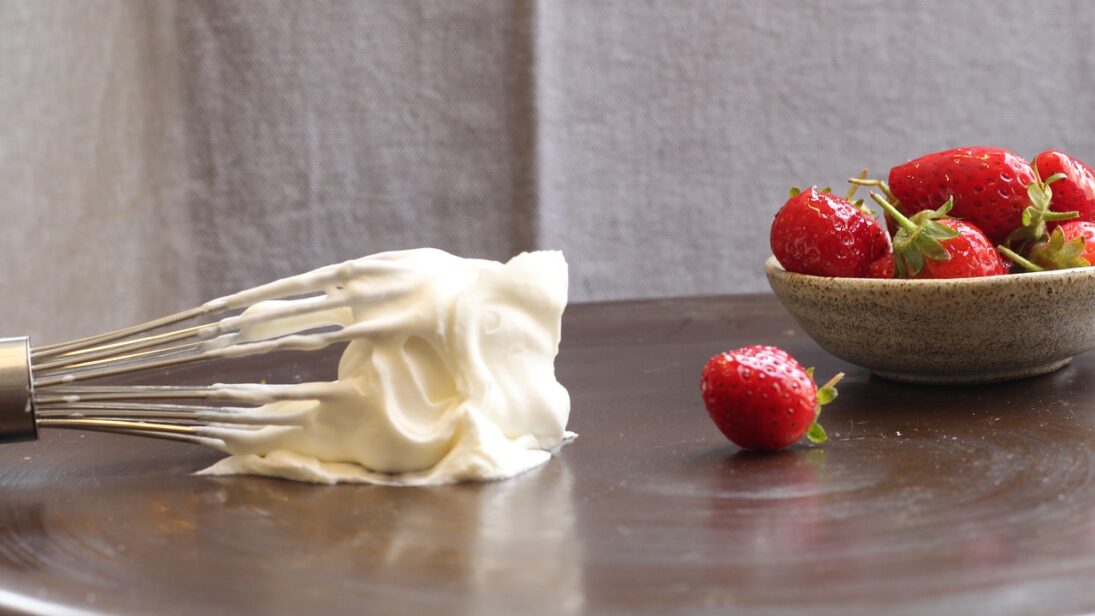Many desserts have whipped whites as a separate component: soufflé, meringue, cream for cakes or cake. However, not all hostesses are able to bring whites to the right consistency. We offer a few best practices that will help to cope with this task and get the title of master.
General recommendations
For this purpose it is necessary to take a container of glass, ceramic, stainless steel or copper. Plastic is not suitable because it is porous and it can retain an oil film, and squirrels do not like grease. Before the procedure, wash the dish under running water and dry it well, since the whites will not be able to whip well in a humid environment. You should also degrease the bowl. Lemon will do an excellent job with this.
There are many nuances with the eggs themselves. Separating the whites from the yolks is much easier if the eggs are cold. At the same time, room temperature whites are easier to whip. The best option is to take the product out of the fridge, beat it and leave it at room temperature for at least an hour. If you don’t have that much time, simply heat the whites by placing them in a bowl of warm water (not boiling water). Note that the eggs must be fresh – those that have been in the refrigerator for a week will not do.
Don’t forget about additives. “Pure” whites will never whip up to the thick and dense consistency that you need. So, at the beginning of the work it is worth to salt the mass. This will help stabilize it. At the end it is worth putting a pinch of citric acid – it has the same function as salt, so it is used to consolidate the result. If you are making meringue, don’t forget to add sugar. However, do it gradually, not all at once. First, whisk the whites until they foam, then put a little sugar or powdered sugar, mix the mass well, and so on in a circle, until the powdered sugar runs out. The sugar will give the whites not only sweetness, but also a dense structure and a glossy surface.
How to whip whites with a mixer?
This is the easiest way, because the mixer will do everything for you – you just need to choose the right speed and add the ingredients in the right sequence. In the first stage the whites should be whipped at the lowest speed. To make the process go faster, salt the mass. The stage will be considered over when a light foam appears. The next stage is citric acid. This will “lock in” the foam, and when you switch the mixer to medium speed, it will produce soft peaks. How do you know when it’s there? Turn the container with the whites – they should not pour out, and the mass on the whisk should sink, because at this stage it is not yet able to hold its shape.
If you’re making dessert, it’s time to add the powdered sugar. Two spoonfuls at a time will be enough. At the fourth stage, using medium speed, the peaks should become stiff, that is, not fall from the mixer whisk and hold their shape. The mass should become dense and glossy. This consistency is considered excellent for all dishes except meringues, which are whipped whites with sugar. For its preparation, the fifth stage is important – after you have put all the powdered sugar, whip the whites for about five more minutes.
How to whip by hand?
We have already talked about the whisk container, the whisk or fork, depending on what you plan to use, must also be dry and clean. Be prepared for the procedure to take much longer than if you were using a mixer. If you do not adhere to the rule that the whites must be beaten in one direction, they will constantly fall off and you will not get a dense foam. Add additional ingredients in the same order as with the mixer. We advise you to use powdered sugar instead of sugar, which does not dissolve well when beating with a whisk, as it is much easier to work with it.

Comments are closed.